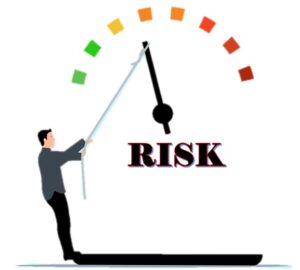
Risk management is a critical process that helps organizations identify, assess, and mitigate potential risks that could impact their objectives. It enables businesses to make informed decisions and take proactive measures to minimize or avoid adverse events.
In this listicle, we will explore the ten important elements of risk management that organizations should consider to establish a robust risk management framework.
1. Risk Identification
The first step in risk management is identifying potential risks that could affect the organization’s goals. This involves a comprehensive analysis of internal and external factors, such as industry trends, regulatory changes, financial risks, operational vulnerabilities, and emerging threats.
2. Risk Assessment
Once risks are identified, they need to be assessed in terms of their likelihood of occurrence and potential impact. A systematic evaluation helps prioritize risks based on their severity, enabling organizations to allocate resources effectively and focus on managing the most significant risks.
3. Risk Quantification
Quantifying risks involves assigning numerical values to risks based on factors like probability, potential loss, and exposure. This process provides a quantitative basis for decision-making, enabling organizations to prioritize mitigation efforts and allocate appropriate resources.
4. Risk Mitigation
After identifying and quantifying risks, the next step is to develop strategies and action plans to mitigate or reduce their impact. This may involve implementing controls, developing contingency plans, transferring risks through insurance, or diversifying operations to minimize exposure.
5. Risk Monitoring
Effective risk management requires ongoing monitoring and surveillance to ensure that identified risks are tracked and managed appropriately. Regular assessments help identify changes in risk profiles, evaluate the effectiveness of mitigation strategies, and facilitate timely adjustments when necessary.
6. Risk Communication
Clear and effective communication is vital in risk management. Organizations must establish channels for open and transparent communication to ensure that all stakeholders are aware of potential risks, mitigation strategies, and their roles and responsibilities in managing risks.
7. Risk Culture
Building a risk-aware culture is essential for effective risk management. This involves instilling risk consciousness throughout the organization, promoting risk awareness, and encouraging employees to proactively identify and report potential risks and control weaknesses.
8. Risk Reporting
Regular risk reporting is crucial for organizational transparency and accountability. It provides stakeholders, including senior management and board members, with a comprehensive overview of the organization’s risk landscape, key risk indicators, and the effectiveness of risk mitigation efforts.
9. Risk Response Planning
Organizations should develop robust risk response plans to address identified risks. These plans outline specific actions, responsibilities, and timelines to execute when risks materialize. Effective response planning ensures a timely and coordinated approach to mitigate the impact of potential risks.
10. Risk Review and Continuous Improvement
Risk management is an iterative process that requires periodic reviews and continuous improvement. Organizations should conduct regular evaluations of their risk management practices, identify areas for enhancement, and implement corrective measures to strengthen their risk management framework.
Conclusion:
Implementing effective risk management practices is crucial for organizations to navigate uncertainties and protect their interests. By incorporating the ten key elements mentioned above, businesses can establish a comprehensive risk management framework. A solid framework can will help businesses identify, assess, and mitigate risks, enabling them to achieve their objectives with greater confidence and resilience.
